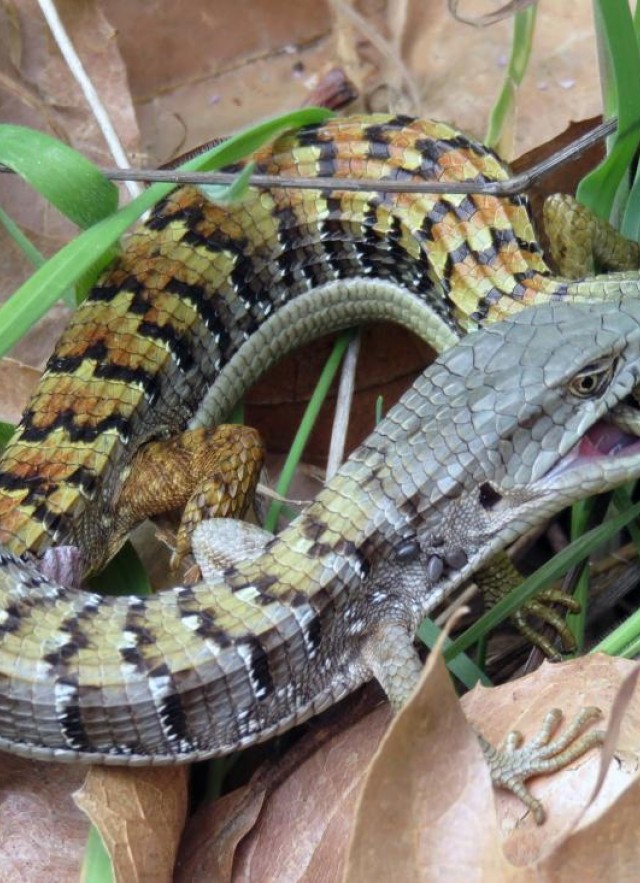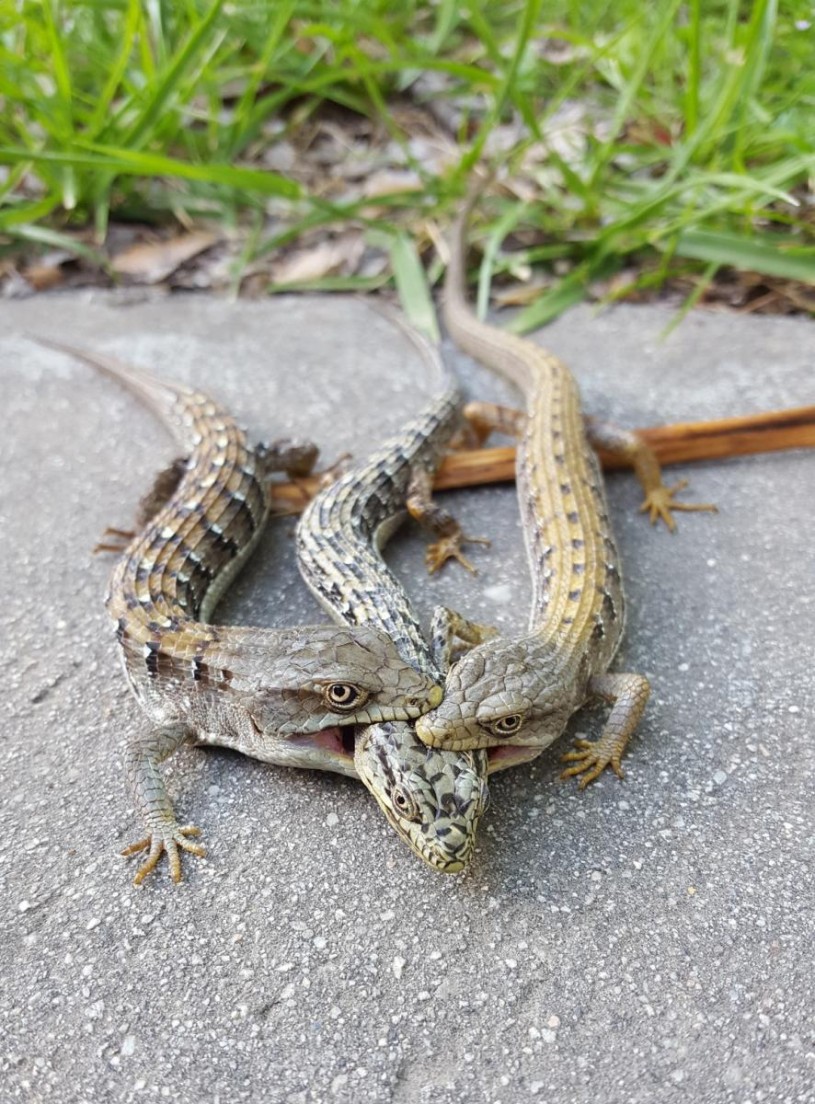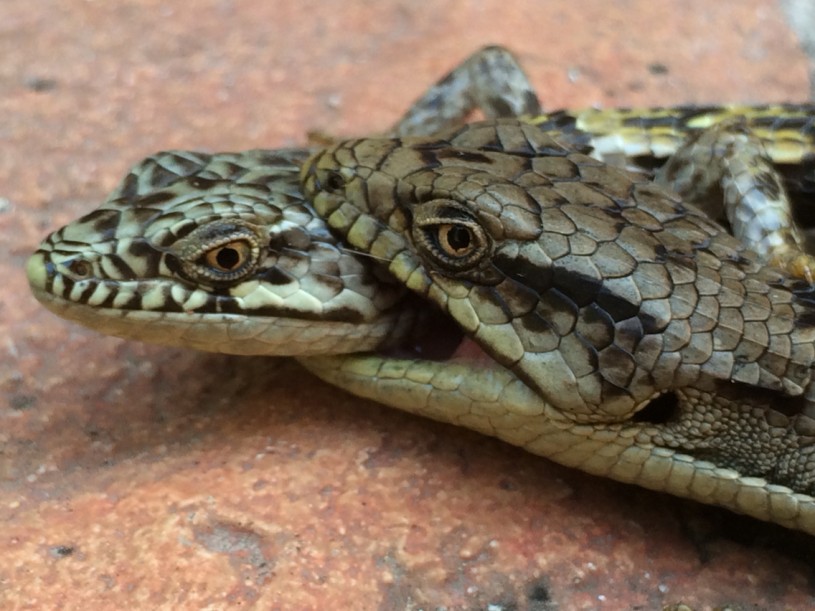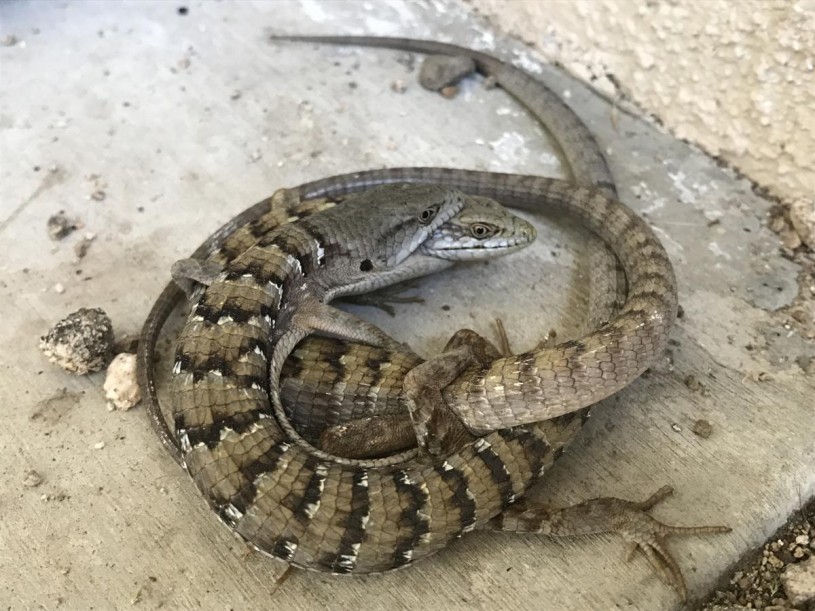The Hart Museum remains closed. Los Angeles County has approved a plan to transfer the William S. Hart Museum and Park from the County to the City of Santa Clarita.
We Want Your Photos of Alligator Lizard Sex
Valentine’s Day is our annual reminder that we are entering alligator lizard mating season.

February 12, 2018
Happy Valentine’s Day! While February 14th might be the day you spend thinking about that special someone in your life, here at the Museum, Valentine’s Day is our annual reminder that we are entering alligator lizard mating season. And, we need your help to study their breeding biology.
Alligator lizards are the most widespread species in urban Southern California. As a result, you might think scientists know a great deal about their biology. Unfortunately, that is not the case at all. Like almost every species on this planet, we still have a huge amount to learn about the most basic aspects of their natural history, including their mating behavior.
Although this species is widespread, it is unlikely that a professional scientist will even see mating behavior in this species during her/his career. In fact, in the entirety of the scientific literature, there are only three published dates of when Southern Alligator Lizards have even been observed breeding. As I write this, I have never seen mating alligator lizards, though fingers crossed for 2018!
Fortunately, we can crowdsource the study of mating behavior! Although this behavior is rarely observed, we can accumulate lots of observations if we have thousands of people looking.
Starting in 2015, we have promoted the study of alligator lizard mating behavior through citizen science, and the results have been astounding—156 observations and counting! And this is just for the Southern Alligator Lizard, which is found from northern Baja California to southern Washington; our records span almost the entire range. We also have gathered 16 observations of mating behavior in the Northern Alligator Lizard, which is found from central California to southern British Columbia.

By the numbers—156 vs 3. In the entirety of the scientific literature, there are only three reported dates for when mating takes place, but citizen science has yielded 156 observations in just three years of effort! And this is entirely because of observant naturalists, who pull out their smartphones and digital cameras to document amazing discoveries that often are right in their own yards. Not only are we learning about alligator lizards, but we are demonstrating that citizen science has the potential to revolutionize animal behavior research.
What to look for? During mating season, males search out females. The male bites the female on her neck or head and may hold her this way for an extended period. Some of our citizen scientists have repeatedly checked on mating pairs, finding them in this mating hold for over 31 hours! At times, especially early in the encounter, the two may engage in a bit of a wrestling match (if you see this, please try to get videos).
The actual mating event is relatively brief, so the obvious question is why do the lizards stay together for so long. There are two likely possibilities. One, the male may be “mate-guarding,” staying with the female to make sure other males don’t have a chance to mate with her. Two, the female may be waiting in hopes another male, more to her liking comes along, to displace the first male. We do occasionally see multiple males trying to mate with a female, but we need more observations to tease apart the details of their mating behavior.
When to look? Because we have accumulated so many observations, we now know that Southern Alligator Lizard mating season starts in early February in the southern part of the range (the earliest observation is February 7) and continues into early June in the northern part of the range and at higher elevations. In Southern California, most of the breeding activity is between March 11 and late April.
For the Northern Alligator Lizard, breeding is usually between mid-March and mid-June, again with lizards in the south and at lower elevation populations breeding earlier.
Where to look? Alligator lizards can be found from coastal sand dunes to high elevations in our mountains. They also occur in urban areas. Normally alligator lizards are well hidden in vegetation and leaf litter, but when in the mating hold, pairs often wander out in the open, and are often observed on driveways, sidewalks, lawns, and in yards. It is also possible to find pairs several feet off the ground on fences and in shrubs.
How to document? Take photos! If the pair is actively wrestling, please take video as well. We are especially interested in how long pairs remain in the mating hold. If possible, please check back every few hours and search for the pair in the general area. By doing this, people have documented pairs in mating holds for over 31 hours, and moving dozens of feet.
If you see courting or mating alligator lizards, please take photos (and maybe also video if they are being active) and submit these to the RASCals project. You can do this through iNaturalist, or by emailing the photo to rascals@nhm.org, or by using #NatureinLA on social media (Facebook, Twitter, Instagram), or by texting us your photos at 213-663-6632. If you have photos from previous years, please submit those as well.
To learn more about this research, check out the Valentine’s Day episode of The Curiosity Show.
To follow this research, keep an eye on journal entries posted to the RASCals project page.


